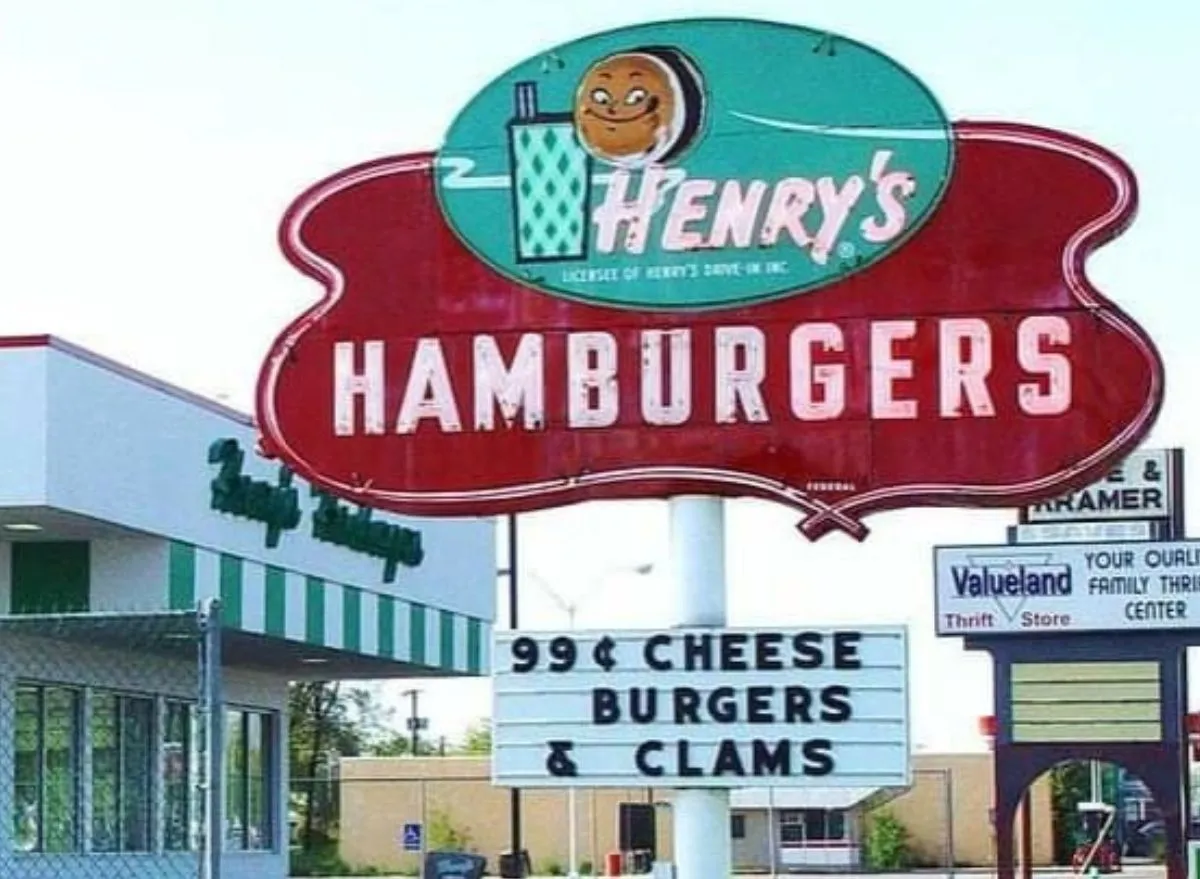6 Beloved Burger Chains in America That Went Out of Business
Our obsession with quick-service burgers dates back more than a century, when America’s oldest burger chain White Castle introduced us to the pleasures of uniformly perfect minced meat patties on tiny buns.
There have been numerous burger giants on the scene since (and burgers have only gotten bigger). Some, like McDonald’s, Burger King, and Wendy’s, have demonstrated they’re staying power by rising to the top of the pack and still very much holding the top spots in the burger industry today.
But there have also been greats that came and went. These chains once served as shining examples of successful burger franchises—many were in operation for decades, expanding to hundreds of restaurants all across the country. Unfortunately, they’ve faded into oblivion since, thanks to a combination of things like poor management and rising competition.
Here are several burger chains that were once the most beloved restaurant destination in America.
Sandy’s Drive-In
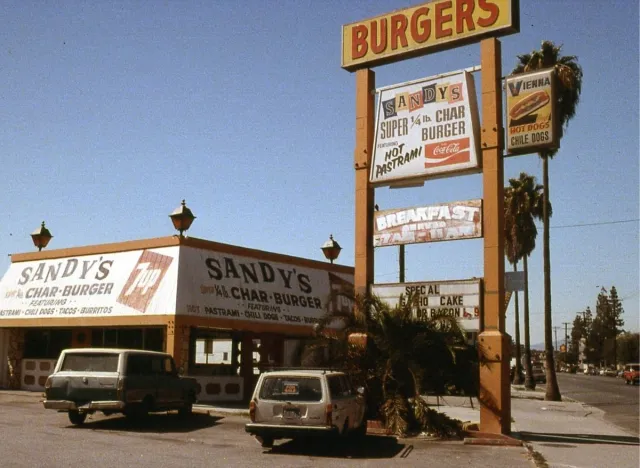
Before McDonald’s took America (and eventually the rest of the world) by storm, Sandy’s Drive-In was the hot spot for classic burgers. In 1956 the joint opened its first store and only 10 years later the brand expanded to 121 locations across five different states, The Travel reports. While popularity was at an all-time high, it wasn’t enough to continue the success—Sandy’s Drive-In was bought out and the majority of locations (90% to be exact!) were taken over by another infamous burger chain on the rise: Hardees.
The last Sandy’s location to close was in Muscatine, Iowa (to later become a Hardee’s restaurant) in 1979. Although, to this day, Sandy’s Drive-In is dearly missed by customers of the 70s, so much so that they’ve banded together to create a commemorable Facebook page in the chain’s honor.
Henry’s Hamburgers
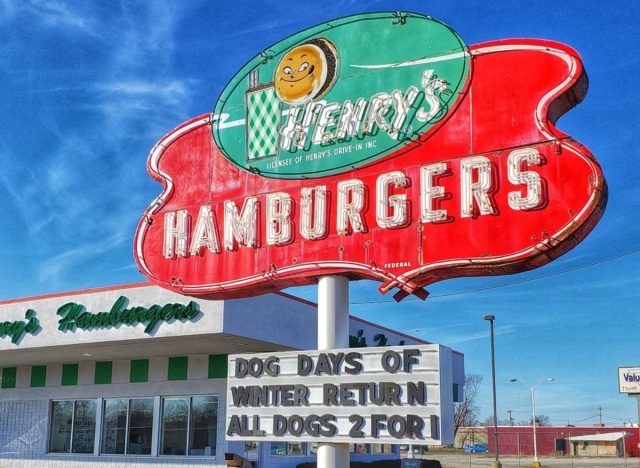
It’s the 1950s and drive-ins are all the rage. Bressler’s Ice Cream Company, a Chicago-based chain selling 33 flavors of ice cream, wants in on the action and decides to expand into fast food.
Henry’s Hamburgers was started as that fast-food offshoot in 1954, and while it was originally intended for boosting the sales of malts and ice creams, the burgers took on a life of their own. By the mid-1960s, the chain had expanded to over 200 restaurants from coast to coast, and was, at one point in time, bigger than McDonald’s.
Henry’s was known for its 15-cent burgers (or ten for a buck!), fresh, hot fries, and orange soda that was “the best in town.”
But with the growth of companies like McDonald’s and Burger King, the market became increasingly competitive. Failing to keep pace with its peers, Henry’s entered a decline in the 1970s, shuttering locations at a fast pace.
Today, the beloved burger empire is gone, but there is still one Henry’s Hamburgers location operating in Benton Harbor, Mich.
Burger Chef
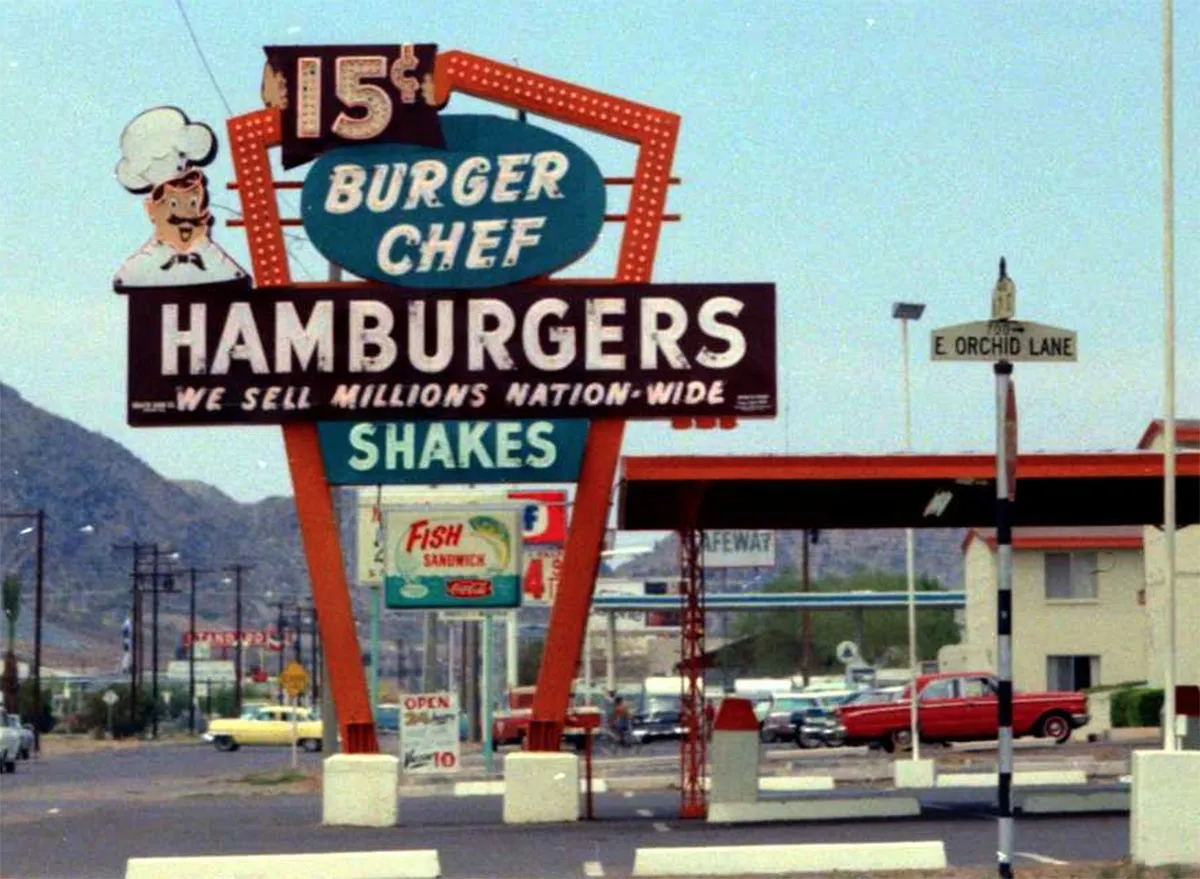
A true fast-food giant of its time, Burger Chef was founded in 1957 and grew to over 1,000 nationwide locations within 15 years. In fact, in 1972, its 1,200-location footprint was bested only by McDonald’s, which operated 1,600 restaurants at the time.
Thanks to its inventor founders, brothers Donald and Frank Thomas, the Indianapolis-based brand used a number of industry firsts to achieve success: a patented flame broiler, automated milkshake machines, soft-serve ice cream machines, and fast-food’s first kids’ meal that bundled food with toys.
The chain saw major growth in the 1960s and 1970s, going from 600 restaurants in 1968 to more than 1,000 by 1972. But by the late 1970s, the brand was beginning to lose its footing, and again, the culprit was growing competition. The chain’s excellent idea of kids’ meals was being copied by giants like Burger King and McDonald’s, and Burger Chef failed to retain its monopoly over the lucrative menu category, despite several lawsuits it filed.
Hardee’s acquired Burger Chef in 1981 for $44 million and lost no time rebranding most of the restaurants. The final Burger Chef, located in Cookeville, Tenn., closed its doors in 1996.
Gino’s Hamburgers
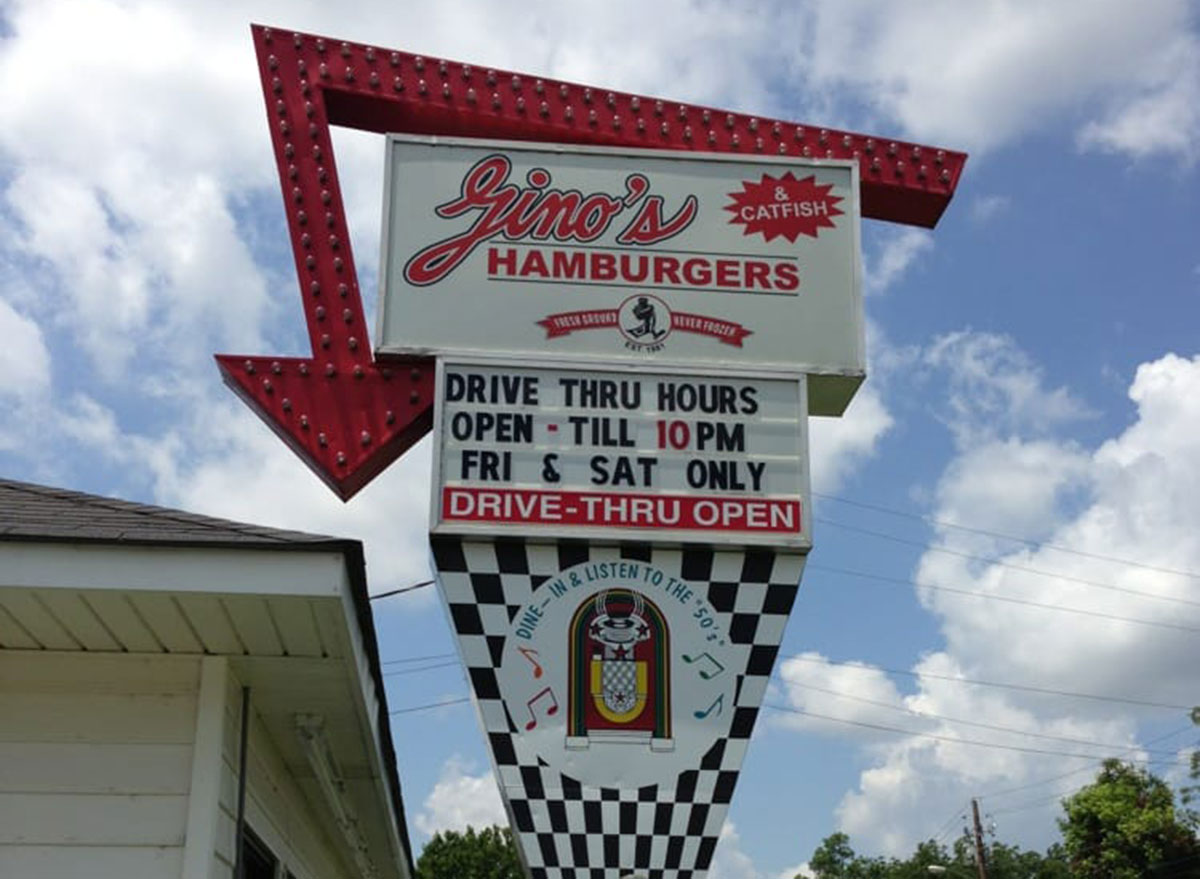
Founded in 1957 by NFL Hall of Famer Gino Marchetti, this burger chain was quite the regional powerhouse throughout the 1960s in the Mid-Atlantic. Its locations combined menu staples like Gino Giant, a predecessor of McDonald’s Big Mac, and sports memorabilia. It also offered bundled family deals like a Meal for Five priced at $1.75, which made for a popular family destination.
Although the chain’s footprint ended up growing to 330 by 1972, the success didn’t last. In the 1980s, Marriott purchased Gino’s and merged it with its existing Roy Rogers brand. A new iteration of Gino’s called Gino’s Burgers and Chicken opened in 2010 with a new menu, and there are still two Gino’s locations operating in Maryland today.
Red Barn
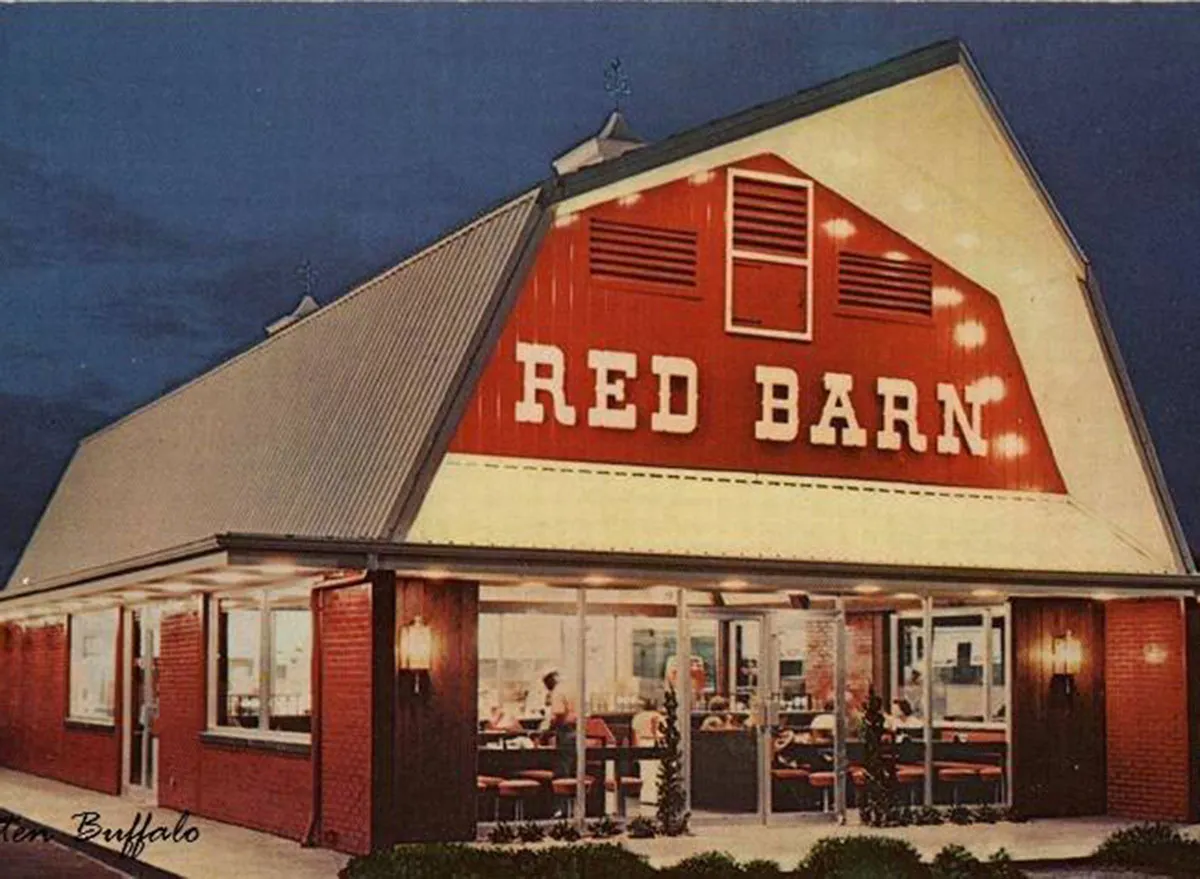
The home of the Big Barney and Barnbuster burgers—creations that predated similar items at larger burger chains—as well as the first self-service salad bar in fast food, Red Barn was quite the pioneer. The chain was founded in 1961 in Springfield, Ohio, and reached an impressive footprint of 300 to 400 restaurants across 19 states and international markets in Canada and Australia.
Red Barn changed ownership several times during its relatively short life, which was ultimately its demise. Once it fell into the hands of City Investing Company thanks to a merger in 1978, priorities and resources were shifted away from the burger business and into real estate ventures. By 1988, the chain was defunct.
White Tower
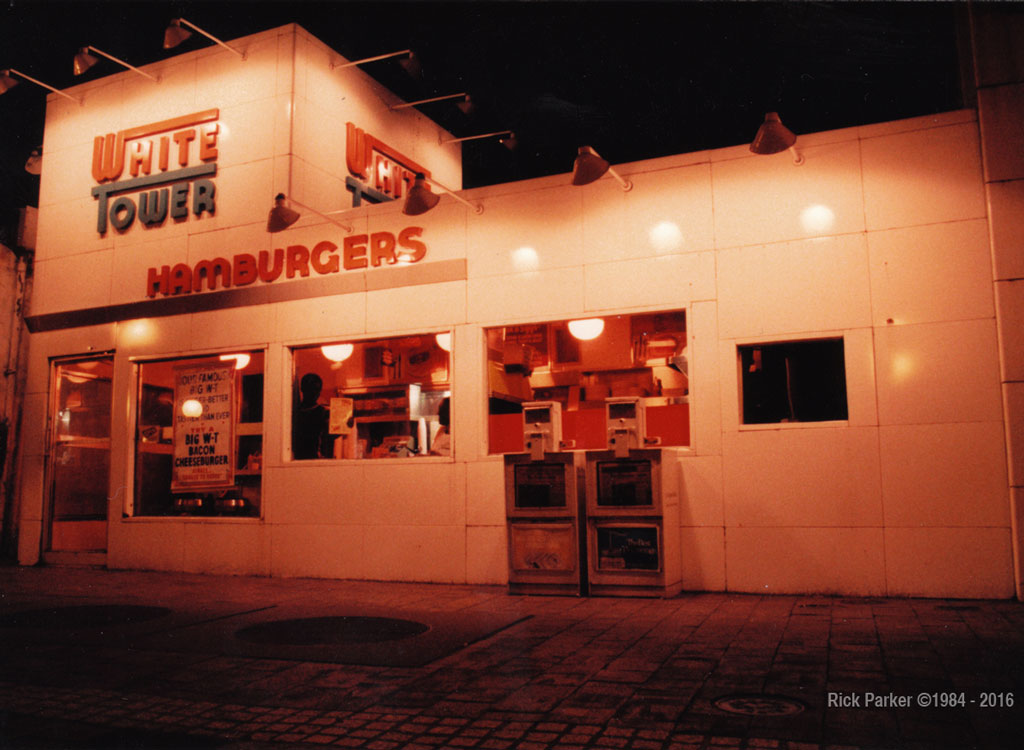
Coming into existence in 1926, five years after White Castle, White Tower was branded as a blatant copycat of America’s oldest fast-food chain from the very start. Everything from the menu to the name, and even the white fortress-like buildings, was lifted from its Kansas-based role model. The founding father-son duo even hired a former White Castle operator to help them with the business.
Naturally, it wasn’t long before White Castle successfully sued White Tower in the 1930s and forced the chain to alter its aesthetic. White Tower ended up weathering the lawsuit and peaked at 230 locations in the 1950s, operating restaurants all over the East Coast and the Midwest.
Ultimately, the suburban migration ended up being the chain’s demise, thanks to the fact that its restaurants were mostly operated out of pricey pieces of real estate in city centers. Its last location shuttered in 2004.
A version of this story was originally published on September 16, 2022. It has been updated to include new information.
